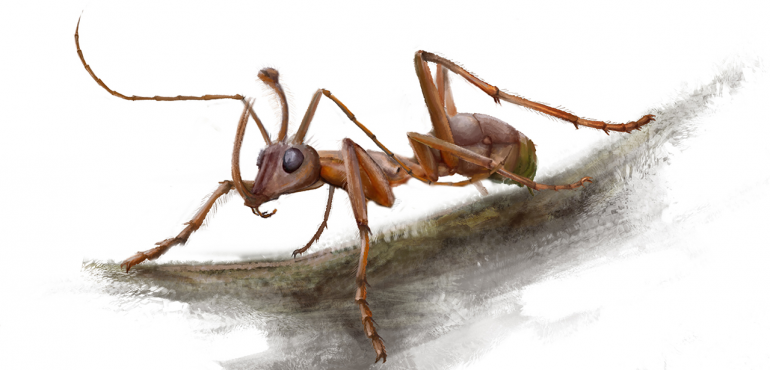A new ant species discovered in pieces of 99-million-year-old Myanmar amber might not have the magic of a unicorn—but it does have a bulbous horn bursting from the top of its head. The protrusion is unique amongst ants, researchers report this week in Current Biology. The underside of the horn is covered in tiny hairs, indicating that it’s the tool of a predator: The trap jaws of some other ant species have similar “trigger” hairs that, when brushed, spark the jaw to rapidly shut around their prey. But the unicorn ant was seemingly ahead of the trap-jaw game—these other ants wouldn’t evolve until millions of years after this unique insect was alive. Plus, the unusual size of its horn and its paired, pointy mandibles indicate that it was probably more limited in diet than its distant trap-jaw cousins: It only could have captured big prey, because smaller targets would have easily escaped its giant maw. Ants were just beginning to diversify into different groups in the Cretaceous period, and most of them were generalists with more typical body shapes. So this Cretaceous killer, the researchers say, is an indication that some ants were already highly specialized even this early in the group’s evolutionary history.
AAAS | Full Article


